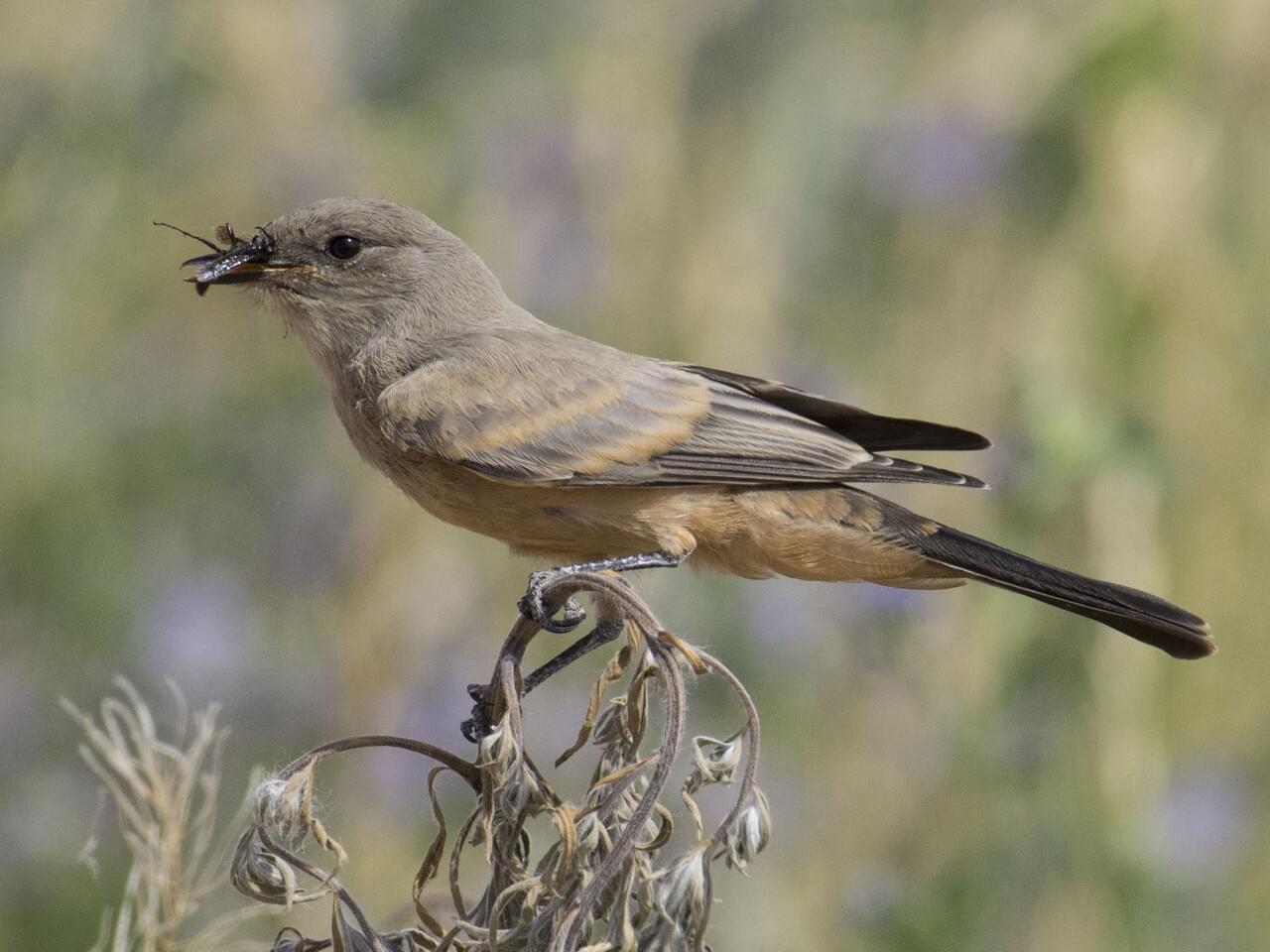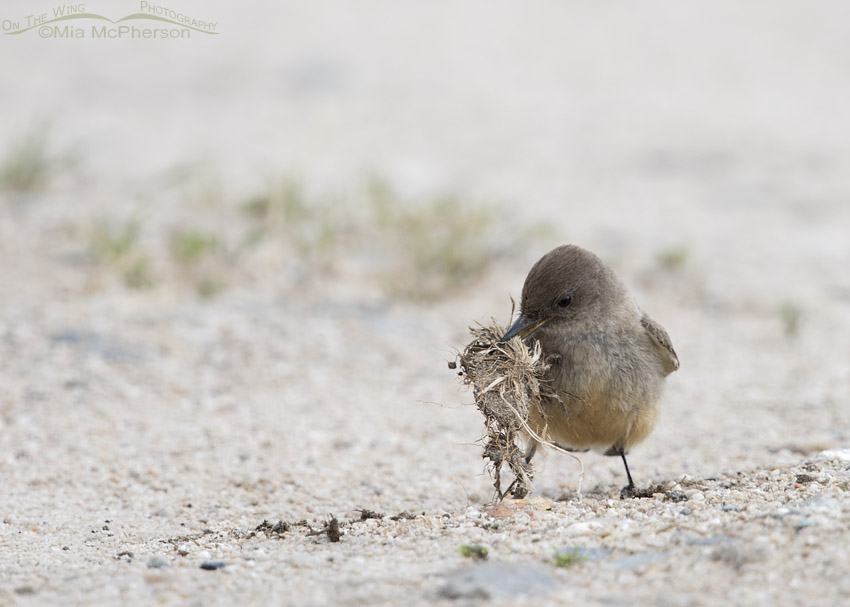Say’s Phoebes (Sayornis saya) are described as having brownish gray wings, back, and head; a blackish tail; and a distinct cinnamon-colored belly. They are a member of the flycatcher family, which as the name suggests, describes their diet. They are insectivores that feed on bugs like grasshoppers, crickets, and beetles. Amazingly, much of this insect-catching is done in mid-air! For the most part, Say’s Phoebes go where their food goes: vegetation that attracts insects also attracts these birds.

Macaulay Library/Nick Tepper - A Say’s Phoebe showing its cinnamon belly.
Here in San Diego, you may notice different avian friends present around fall and winter. Some of these birds are following food sources south, as vegetation and consequently insects begin to disappear, whereas others are just stopping by on a longer migration northward. The Say’s Phoebe is part of the latter group; by early spring, they continue farther north to reap the rewards of rapidly growing insect populations.

Macaulay Library/Marky Mutchler - A juvenile Say’s Phoebe with an insect in its beak.
The fossil record provides insight into just how long these birds have been around. Fossils found in Arizona, New Mexico, Texas, and even California have been identified as Say’s Phoebe bones dating back about 400,000 years, to the late Pleistocene. To put this into context, some of the oldest human DNA ever collected dates back to the same period. That means that Say’s Phoebes have survived in the Americas since early humans roamed the planet! Since then, even in the face of growing civilization, urbanization, and habitat loss, their population has continued to succeed. Not only are Say’s Phoebes considered low concern in terms of conservation status, but their range extends the farthest north of any flycatcher. Spanning from central Mexico all the way to the Arctic tundra, their breeding range showcases their capacity to adapt to a variety of climates and environmental challenges. One facet of this adaptability is best presented in their nesting habits. Say’s Phoebes aren’t particularly picky and will build nests using whatever resources are available. Oftentimes this means nesting in house eaves, mailboxes, machinery, and even old nests from other species! In more northern regions, they have been recorded as nesting on the Alaska pipeline.

Photo courtesy of Mia McPherson of OnTheWing Photography - A Say’s Phoebe picking up nesting material.
Luckily, Say’s Phoebes are not yet among the hundreds of avian species around the world threatened by human activity, but they can still benefit from environmental advocacy, education, and protection. Programs geared towards native plant restoration are especially crucial to revitalizing ecosystems. By prioritizing these plants, we can boost the food source available to native herbivores like insects which in turn attract indigenous birds, reptiles, and other creatures that make up a healthy food web. One of the best ways to help protect avian species is by supporting conservation efforts like the ones here at Cabrillo National Monument!
Sources:
“Birding in San Diego.” San Diego, www.sandiego.org/articles/birding/birding-in-san-diego---a-field-guide.aspx#:~:text=Located%20on%20the%20Pacific%20Flyway%20migration%20path%20and,referred%20to%20as%20the%20%E2%80%98birdiest%27%20in%20the%20country. Accessed 19 Nov. 2023.
Gibbons, Johnny. “Bird Nests: Variety Is Key for the World’s Avian Architects.” Smithsonian Insider, insider.si.edu/2015/04/bird-nests-variety-is-key-for-avian-architects/. Accessed 19 Nov. 2023.
McMaster, Geoff. “U of a Anthropologist Uncovers Oldest Human DNA Ever Found in Africa.” U of A Anthropologist Uncovers Oldest Human DNA Ever Found in Africa | Folio, 17 Mar. 2022, www.ualberta.ca/folio/2022/03/u-of-a-anthropologist-uncovers-oldest-human-dna-ever-found-in-africa.html.
“Milestones in Human Evolution.” Smithsonian Institution, www.si.edu/newsdesk/factsheets/milestones-human-evolution. Accessed 19 Nov. 2023.
Powell, Hugh. “The Basics of Bird Migration: How, Why, and Where.” All About Birds, 2 Oct. 2023, www.allaboutbirds.org/news/the-basics-how-why-and-where-of-bird-migration/.
“Say’s Phoebe Overview.” Cornell Lab of Ornithology, www.allaboutbirds.org/guide/Says_Phoebe/overview. Accessed 19 Nov. 2023.
|
November 23, 2023
|
Last updated: November 23, 2023
